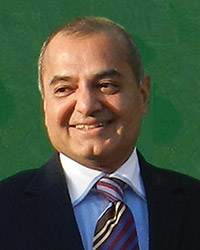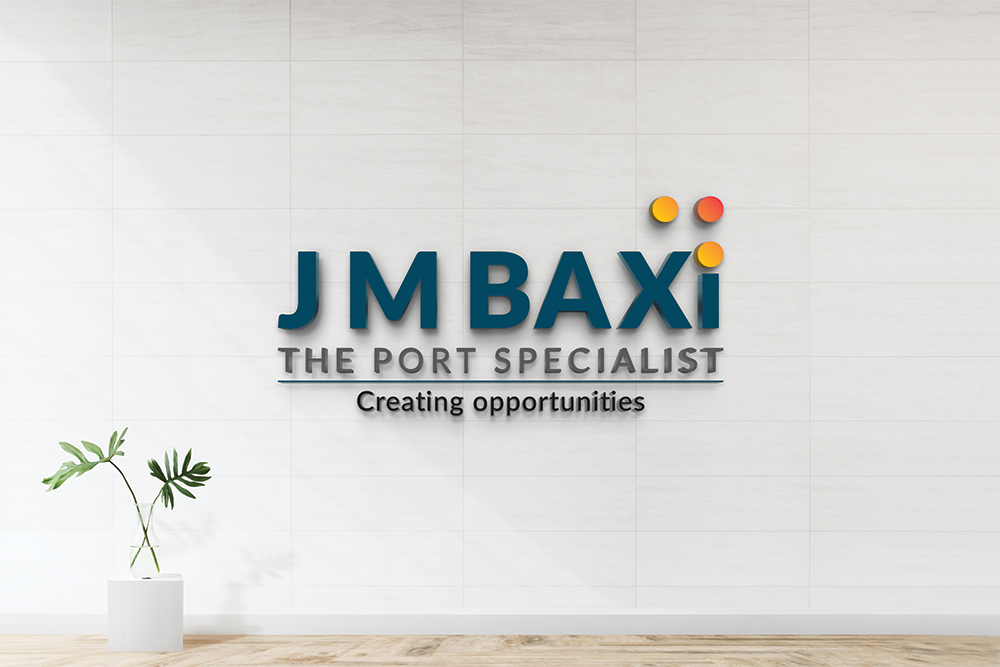
Dear Friends and Colleagues, if the first 3 months were an early sign for the rest of the year then it's going to be an action packed 2022. The last three months have left us all breathless (but not due to Covid). However, one does not know how to start this column as there is so much t o cover. The start of the year saw the onset of the third wave of COVID-19 and the invasion of Ukraine by Russia. We have also seen rises in basic commodity prices for things such as metals, coal, agricultural produce, crude oil and gas. The rises have been greatly accelerated due to the war. Crude oil and Brent prices went as high as US$ 125 per barrel. With the lethal combination of the past year’s disruptions to supply chains and higher prices, we are seeing inflationary pressures in varying degrees across the world. As inflation is becoming an increasing concern for economists and central banks across the world the US Federal Reserve is beginning to increase interest rates.
- THE FRONT-LINE HEADLINES OF INDIA HAVE BEEN:
- The introduction of the PM Gati Shakti programme.
- The introduction and enhancement of the Production Linked Incentives (PLI) scheme for various manufacturing sectors.
- GOI’s push to set up manufacturing facilities for semiconductors and chips.
- A major thrust towards clean energy and clean fuel, specifically hydrogen. Solar energy is gaining a major role as a source of clean renewable energy.
The other news was India’s financial budget for the fiscal year 2022/2023 and an analysis of the agriculture output in India for the year 2021/2022.
The third wave of COVID-19 has abated, and at the time of writing, India has begun to unlock. Experts seem t o opine that the world will have to live with COVID-19, just as we do with the flu, and treat it as the new normal. Hygiene and concern for others will be the desired behaviour patterns. Be safe, be healthy and be careful.
A brief background of the PM Gati Shakti programme will provide a perspective. Over the last few years, the GOI has been focused on turning India into a competitive and efficient economy. Logistics has a large role to play in the GOI’s plans. The availability and creation of infrastructure therefore, is an important aspect of policy and planning. This can be seen with the rapid addition and expansion of ports, roads, warehouses, multi-modal llogistics parks, inland waterways, etc. In our maritime landscape, we have the Maritime Vision 2030 document, which lays out the pathway ahead. We have seen the creation of the Sagar Mala Development Corporation, an implementation arm of the Sagar Mala programme. However, in the very recent past, supply chain disruptions have had catastrophic impacts on the economies of almost all countries. One of the main causes has been the ongoing trade tensions between the USA and China. Whilst China’s status as the factory of the world may not change in a hurry, global stakeholders would like to see a China +1+2+3 model of doing business. India would obviously like to be a stronger participant in this development. Achieving this ambition will require several steps, such as developing more technology, establishing modern manufacturing processes and increasing government support, both at the central level and also at the state level. We have seen the Atmanirbhar programme, the Make in India programme and the Skill India programme, and now we are seeing the introduction of the PLI programme. Along with this, it is also expected that India will be a $5 trillion economy by 2025 and a US$ 8 trillion economy by 2030.
With this background, the PM Gati Shakti programme is a logical 'unified theory of development'. The PM Gati Shakti, as defined by our Prime Minister Narendra Modi, is based on seven engines of growth: roads, railways, airports, ports, public transportation, waterways and llogistics. These forms of infrastructure must all work harmoniously together, and also with platforms like the Unified Logistics Integrated Platform, the National Master Plan Portal, the Asset Monetisation Pipeline, etc. To achieve its goals, India has to go up the value chain in the manuf acturing sector, especially technology-based manufacturing such as engineering goods, electronic goods, high-end chemicals, pharmaceuticals, textiles, food processing, etc.
In 2021/2022, agricultural production has been steady, with visible growth in a few crops. Wheat, rice, oil seeds, pulses, soya, maize, cotton, coffee, tea, sugarcane, dairy and horticulture have all shown robustness. This year, therefore, we should see a continuation of our healthy exports of agriculture products. Some impact on India’s exports of tea and rice to Russia may be felt due to the Russia–Ukraine war.
The main highlight of the Union Budget of India for 2022/2023 is clearly the focus on public investment in the development and creation of various forms of infrastructure, especially roads, railways and urban development. The llogistics and the maritime sector is also likely to see greater investment through public–private partnerships (PPPs). The GOI has also in troduced a new act, the Major Port Authorities Act, which supersedes the earlier Major Port Trust Act. On a basic level, our major ports, which were operated as trusts, will become authorities. A detailed assessment of the implications of this new act is available from our commercial, legal and research team, if you are interested in learning more.
The unabated rise of commodity prices is certainly leading to inflationary pressure. The rise of crude oil prices will lead to higher fuel costs,resulting in increased transportation costs. This is happening at a time when the global container shipping market is still experiencing the lethal disruption. Several ports, especially in the US, Europe and the East, have been congested for weeks. There are shortages of space, slots and containers, and freight rates are at astronomical levels and any return to normalcy is not yet visible. In parallel, we understand that the major container lines have a collective cash surplus of approximately US$ 130 to US$ 150 billion for the calendar year 2021. In comparison, in 2021, Amazon had a net income of US$ 33 billion and Walmart of US$ 13.70 billion. I t is heartening to see that new orders for 600 ships have been placed with shipyards. Let’s hope that the shipping companies do use this cash bonanza to order more ships and containers to bring the demand–supply dynamics back to manageable levels. At these high freight levels, there is a major risk that volumes of international trade will fall. Moreover, it will be interesting to see the emergence of a clean fuel solution for ships. Shipping companies, engine makers and other stakeholders are working on solutions ranging from e-methanol, e-ammonia, e-hydrogen etc.
One point that bears repetition is that during this supply chain disruption, when port congestion and berthing delays almost everywhere caused large economic losses with almost 20% of shipping capacity idle awaiting berths, Indian ports did not present these problems to shipping companies or the trade. In fact, Indian trade suffered due to inadequate sailings and slots. Once again, this proves to the shipping companies that it pays to do business with India. We expect that Indian ports will see a much larger allocation of services, sailings and slots for a wider range of ship sizes by the shipping companies.
The volumes of cargo at Indian ports have grown steadily (2–3%). One area that has seen consistent growth has been the gas sector, especially the LPG sector. Once again, with the rising price of petroleum products, the increase in prices for LPG and LNG c ould prove to be a dampner for volumes.
Our organisation is seeing consistent growth in the capital goods sector with visible capital expenditure across various industries. In this issue, you will find an interesting article describing how J M Baxi Heavy moved multiple heavy packages for various clients. New projects, including expansion projects, present many exciting opportunities for J M Baxi Heavy, the project llogistics specialist.
Our terminals, both at ports and inland, have shown credible growth, mainly due to our close relationships with our clients. Our rail division has provided good connectivity between our inland terminals and our port terminals. With a lot of satisfaction, we saw our VCT-2 (Vizag Container Terminal 2) come on stream in February as per our commitment to the port. It is a state-ofthe- art facility with one of the deepest drafts in India. It has the most modern and advanced equipment, including post-Panamax twin-lift RMQCs etc. I hope you have an opportunity to visit us at Vizag.
Kudos to our shipping agency division, both containers and non-containers, for demonstrating resilience in their efforts end achievements. Despite all the challenges with space and container shortages, they have maintained our relationships with our principals and customers.
Similarly, please join me in congratulating our llogistics division for having shown innovation and perseverance in enabling us t o handle new types of commodities for new clients and also in expanding our footprint across India. I hope you enjoy the various articles in this issue, which covers several important and exciting happenings.
It seems that 2022 will be an exciting year with several opportunities for growth, for partnerships, for expansion and for exploring new horizons. It goes without saying that this will be a year of tremendous effort, dedication, focus and concentration. The next two to three years will see us grow as much as we grew in the last decade. Therefore, friends and colleagues, on your mark, get set, go!
Krishna B. Kotak
Chairman - J M BAXI GROUP
